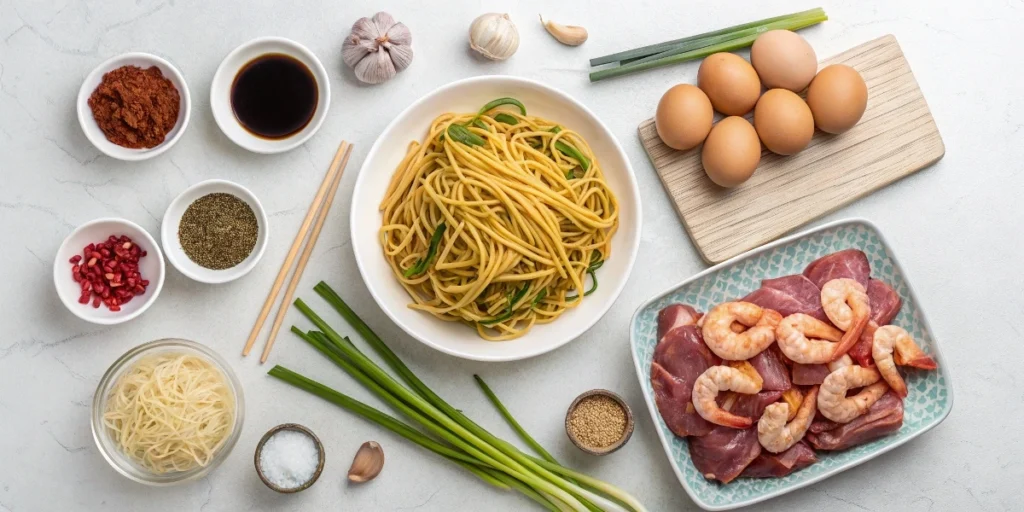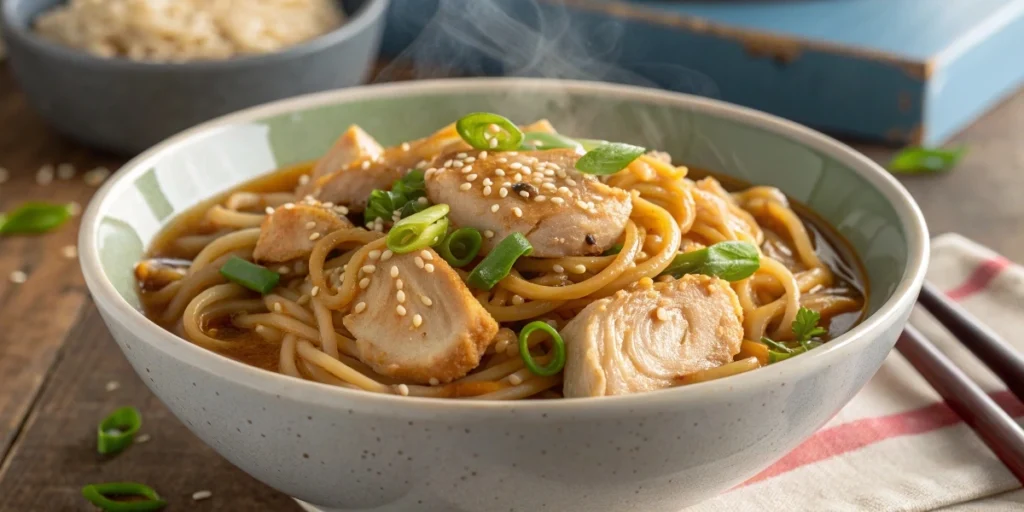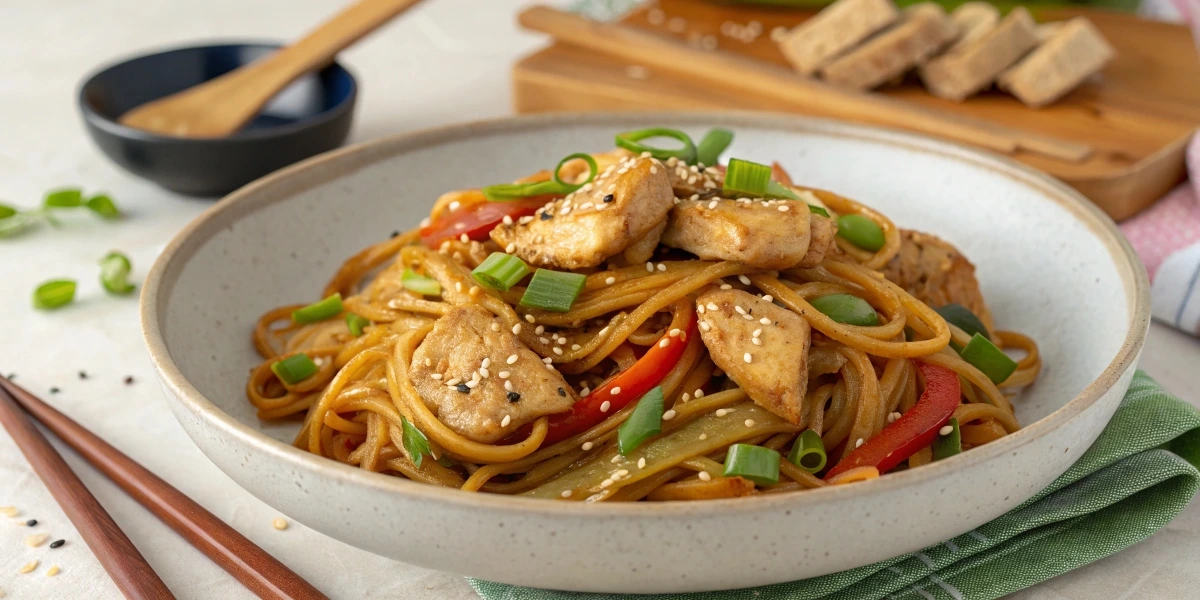History, Preparation, and Recipe Ideas
Hokkien noodles are a staple in many cuisines around the world, loved for their chewy texture and versatility. Whether you’re making a stir-fry or a noodle soup, these noodles will always deliver a flavorful and satisfying meal. In this guide, we’ll explore their history, how to prepare them at home, and share some delicious recipe ideas.
Table of Contents
What Are Hokkien Noodles?
Understanding These Delicious Noodles
Hokkien noodles come from the Fujian province of China. They’re made from wheat flour and water, sometimes with the addition of egg. These noodles are thicker than many other types, offering a chewy bite. Their texture makes them perfect for absorbing sauces, whether they’re part of a savory stir-fry or a hearty noodle soup.
Different Forms of Chinese Wheat Noodles
These noodles come in a variety of forms. Fresh Hokkien noodles tend to be soft, while dried noodles are firmer and require boiling before use. You’ll also find variations in thickness, with some versions being extra thick. Though often associated with Chinese cuisine, these noodles fit perfectly into many dishes across Southeast Asia.
Whether stir-fried or used in soup, these noodles work well in a range of flavorful dishes.
The History and Origins of Hokkien Noodles
A Culinary Journey Across Asia:
Hokkien noodles trace their roots back to the Fujian province in China. The term “Hokkien” refers to the dialect and the people who migrated from this region to various parts of Asia, including Malaysia, Singapore, and Taiwan. As the Hokkien people settled in these regions, they adapted their traditional recipes to incorporate local ingredients.
In places like Singapore and Malaysia, Hokkien noodles became a beloved street food, found in bustling hawker centers. The dish evolved over time, with each region putting its own spin on it. Today, you’ll find countless variations of this dish across Asia.
How to Cook Hokkien Noodles at Home?
Making Hokkien noodles at home requires just a few ingredients:

- 300g of Hokkien noodles (fresh or dried)
- 1 tablespoon vegetable oil (or sesame oil for extra flavor)
- 2 cloves garlic, minced
- 1 onion, sliced
- 200g of your choice of protein (chicken, shrimp, tofu, pork)
- 2 tablespoons soy sauce (light or dark)
- 1 tablespoon oyster sauce
- 1 teaspoon sugar
- 1/2 cup chicken stock or water
- Fresh vegetables (bok choy, bell peppers, carrots, bean sprouts, etc.)
- Optional garnishes: coriander, sliced chili, sesame seeds, fried shallots
Step-by-Step Instructions:
- Prepare the Noodles: Boil the dried noodles according to the package instructions. If you use fresh noodles, simply separate them before cooking.
- Prep the Protein: While the noodles cook, slice your protein into thin pieces. For shrimp, peel and devein them.
- Stir-Fry Aromatics: Heat oil in a wok or large skillet over medium-high heat. Add the garlic and onions, cooking until fragrant.
- Cook the Protein: Add your protein to the pan and stir-fry until it’s fully cooked.
- Add the Sauces: Stir in the soy sauce, oyster sauce, and sugar. Pour in the chicken stock or water and mix to combine.
- Add the Noodles: Toss the cooked noodles in the pan and ensure they’re coated with the sauce.
- Finish with Vegetables: Add your vegetables and stir-fry them until tender yet still crisp.
- Garnish and Serve: Serve your dish with optional garnishes like fresh coriander, sliced chili, or sesame seeds.
Tips for Perfect Noodles:
- Avoid Overcooking: Keep an eye on the noodles to avoid overcooking them. Overcooked noodles become mushy and lose their texture.
- High Heat Works Best: Stir-frying on high heat helps create a slightly crispy texture for the noodles.
- Customize Your Dish: Feel free to swap proteins and vegetables based on what you have in your kitchen.
Popular Dishes Featuring Hokkien Noodles
Across Southeast Asia, these noodles appear in a variety of beloved dishes. Here are some of the most popular:
1. Hokkien Mee (Noodle Soup) – Singapore and Malaysia
This comforting soup features noodles in a savory broth. Typically made with pork, chicken, and shrimp, this dish is both flavorful and hearty.
2. Char Hokkien Mee (Stir-Fried Version) – Singapore and Malaysia
Char Hokkien Mee is a popular street food. In this stir-fried version, the noodles are cooked with garlic, soy sauce, and a mix of proteins like shrimp and pork. The result is a savory and satisfying dish.
3. Hokkien Noodles with Seafood – Southeast Asia
Seafood and Hokkien noodles make an excellent pair. Whether stir-fried or served in a broth, the sweet seafood complements the noodles beautifully.
4. Dry Hokkien Noodles – Taiwan
In Taiwan, dry versions of these noodles are popular. The noodles are stir-fried with soy sauce and served with crispy pork, vegetables, and sometimes a fried egg. This version offers a savory, rich flavor.
The Cultural Significance of These Noodles
In Chinese culture, noodles symbolize longevity. During Chinese New Year, families often prepare long noodles as a way of wishing for a long, prosperous life. Eating unbroken noodles is considered auspicious, as it is believed to bring good fortune.
The spread of Hokkien noodles across Asia represents cultural fusion. As the Hokkien people moved to different regions, they adapted their dishes to incorporate local flavors. Today, Hokkien noodles are a beloved dish in many parts of the world.
Why You Should Add Hokkien Noodles to Your Meal Rotation?

These noodles are incredibly versatile. For example, you can stir-fry them, add them to soups, or even use them in cold noodle salads. No matter how you prepare them, they always deliver a satisfying texture and flavor. Here’s why you should consider adding them to your recipe rotation:
- Versatility: They work in many types of dishes, whether in a quick stir-fry, a comforting soup, or a refreshing cold noodle salad. This makes them a fantastic option for any meal.
- Delicious Flavor: These noodles absorb sauces exceptionally well. As a result, every bite is rich, flavorful, and deeply satisfying.
- Cultural Heritage: Cooking with Hokkien noodles not only introduces you to new flavors but also connects you to a rich culinary tradition that spans continents and centuries.
Whether you’re cooking for a family meal or preparing a dish for a celebration, Hokkien noodles never disappoint.
Conclusion
Incorporating Hokkien noodles into your cooking opens up a world of flavor and creativity. From savory stir-fries to comforting noodle soups, these noodles offer endless possibilities. By following the simple tips in this guide, you can master this dish at home and enjoy a truly delicious meal.

